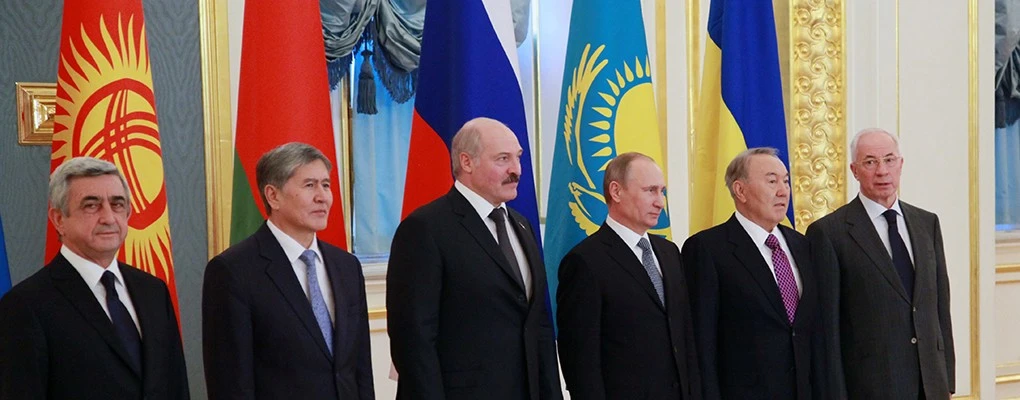Belarus and the Rise of Eurasian Alliances
 Belarus and the Rise of Eurasian Alliances
Belarus and the Rise of Eurasian AlliancesBelarus finds itself at a turning point in 2025 as the geopolitical terrain is changing fast. Nestled at the junction of East and West, this landlocked country has always been strategically important as a buffer and a link between Russia and Europe. Belarus is progressively crucial in developing strategic alliances across Eurasia in the present global scene defined by changing alliances, economic realignments, and regional recalibrations.
Geopolitical attention on Eurasia, a large continent spanning Europe’s boundary to the Pacific Ocean, has sharpened in recent years. Belarus, whose geopolitical stance attracts the attention of both regional and worldwide powers equally, is at its core. Belarus is becoming more and more crucial in enabling alliances spanning much beyond its boundaries as Western dominance suffers losses in Eastern Europe and Russia veers toward Asia.
Belarus has hastened its contacts to non-Western allies in response to extended Western sanctions and political isolation from Europe and the United States. Important stakeholders in Belarus’s changing foreign policy are China, Iran, India, and Turkey. Though different in character, these alliances have as their common goals military cooperation, economic integration, energy cooperation, and diversity of geopolitics relationships. Belarus is thus progressively transcending its historically single reliance on Russia and developing multifaceted ties that are changing the Eurasian strategic scene.
Particularly China has become to be a crucial friend of Belarus. Belarus has hosted the China-Belarus Great Stone Industrial Park, a flagship economic zone advancing connectivity between Asia and Europe, as part of Beijing’s Belt and Road Initiative (BRI). Along with attracting funds and technological transfers, this large-scale initiative has helped Belarus establish itself as a major manufacturing and logistical centre in the middle of Eurasia. Cooperation between Minsk and Beijing is spreading even more into fields including artificial intelligence, green energy, and infrastructure building in 2025. This increasing dependency emphasizes China’s larger path of influence in areas formerly under Soviet control.
Furthermore, India’s growing interaction with Eastern and Central European nations has not let Belarus go unnoticed. The two countries are working on closer links in information technology, defence manufacture, and pharmaceuticals. Belarus is seen by New Delhi as a possible entrance to the Eurasian Economic Union (EAEU), therefore facilitating the access to Russian and Central Asian markets for Indian products. On the other hand, Minsk appreciates India’s technological capacity and market access in South Asia, hence fostering a mutually advantageous relationship based on strategic pragmatism.
Turkey is also playing a bigger part in Eurasia. Under President Recep Tayyip Erdoğan, the forceful foreign policy has seen Ankara make diplomatic and financial investments in Belarus. Turkey’s position is not only economic but also symptomatic of a greater trend: the diversification of power brokers in the Eurasian theatre, with rising trade volumes and debates on defence cooperation. Turkey’s strategic position as a NATO member with developing links to China and Russia creates an interesting balancing act for which Belarus can discover chances for cooperation free from ideological entanglement.
Iran and Belarus are also strengthening bilateral cooperation at the same time in reaction to their shared experiences with sanctions and Western rejection. The cooperation covers military technologies, agricultural development, and industrial modernizing. Belarus is a great friend in Iran’s regional outreach since the country emphasizes on escaping isolation by closer Eurasian relations. This dynamic shows how combined international pressures could lead to unusual but strategically strong alliances.
Every one of these new alliances is performing inside the larger context of Eurasian multilateralism. Regional integration sought by Belarus is being facilitated by institutions including the EAEU, the Collective Security Treaty Organization (CSTO), and the Shanghai Cooperation Organization (SCO). By means of their platform, these groups enable Belarus to express its sovereignty and promote security and economic cooperation free from the conditions usually connected with Western institutions.
Belarus’s shift toward Eurasia does not come without difficulties, though. Aligning national goals with a convoluted and perhaps contradictory web of foreign partners calls for diplomatic grace. The nation must negotiate its historical reliance on Russia, whose own geopolitical aspirations can collide with the interests of other allies as China and Turkey. Furthermore, casting doubt on Belarus’s long-term security and ability to participate as an equal in these alliances are internal challenges ranging from political opposition to economic reforms.
Still, the trend is clear: Belarus is becoming into a major hub in a Eurasian matrix of power undergoing fast change. Minsk’s capacity to draw different alliances and arbitrate between regional parties could improve its international reputation as global multipolarity gets more ingrained. It is about using location, resilience, and pragmatism to carve out a new position in the global system, not only about survival in the face of Western estrangement.
Belarus in 2025 will thus be an active participant in determining Eurasia’s strategic fate rather than a passive periphery. Its developing alliances with China, India, Turkey, Iran, and others follow a larger trend of non-Western coalition-building altering world politics. Belarus’s development from a geopolitical backwater to a major actor in Eurasian affairs epitomizes the changing balance of power in the twenty-first century. Belarus might well be on the road to be a major architect of the Eurasian century as new pathways of collaboration develop and old paradigms vanish












